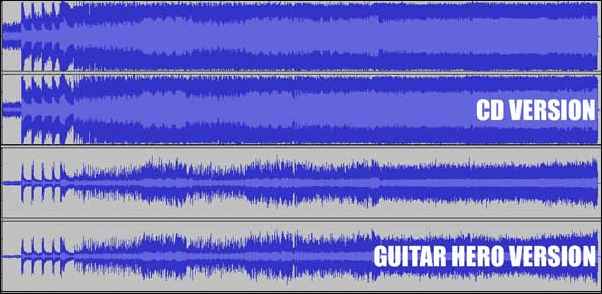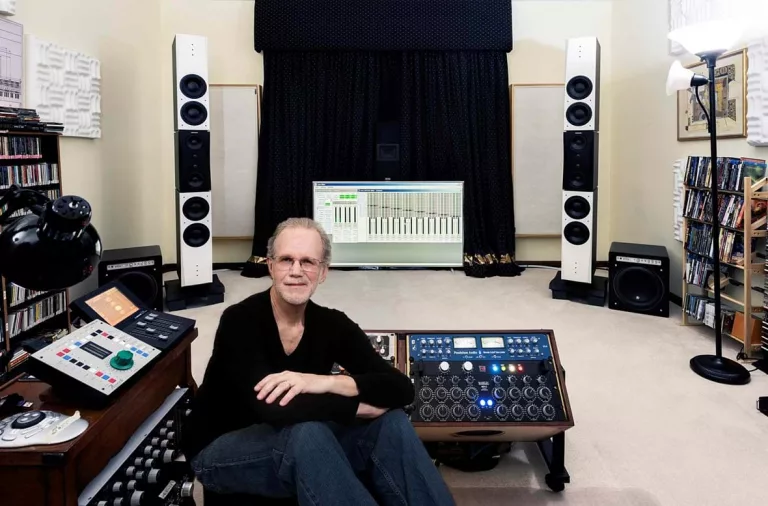Loudness Part 2: Loudness War
The Loudness War, or volume war, is a phenomenon that has deeply affected the music industry since the 1990s. Technological advancements have made it possible to create masters that are increasingly loud, at the expense of sound quality. In this article, we will look at the consequences of this practice. We will also examine the standards and tools that have been developed to counter it.
Understanding the Emergence of the Loudness War


Firstly, the Loudness War emerged during a period when there was no standardization of loudness. Each person could make their master sound as loud as they wanted in order to have the loudest sound possible. This led to a flood of problems in the audio world. Radios were competing to have the loudest sound possible, which led to major titles being remastered at the expense of their quality.


The Loudness War has had a significant impact on the quality of music. The most striking example is Metallica’s album “Death Magnetic“. Two versions of this album exist, one for CD and the other for Guitar Hero. Although both versions are musically identical, the CD version is completely limited to maximize the average level and thus sound louder. As a result, virtually all of the dynamics of the music have been eliminated. This version can cause auditory fatigue and assault the eardrums. Many listeners have therefore stated that the version produced for Guitar Hero sounds much better than the CD version.
Other consequence
Digital distortion is a phenomenon that occurs when an audio signal exceeds the full scale range, which is the upper limit of 0dBFS. This leads to clipping of attack peaks and can even generate digital clicks, which may be more or less audible. The consequences are significant as sound engineers will excessively compress and limit peaks, altering the transient response of the instruments. As a result, the sound will no longer be faithful to the original source.
In conclusion, the Loudness War has had significant consequences on the sound quality of produced music. The pursuit of loudness has led to excessive compression and limiting of volume. This race to loudness has also resulted in the loss of nuances and subtleties in music.
What do sound engineers think about it?
Bob Ludwig, a mastering engineer, has attributed the loudness wars to A&R guys doing what they do best – whatever it takes to get their acts noticed. They began to influence their labels to pressure mastering engineers to make tracks a little louder based on the idea that songs would have more immediate appeal and attention. This was quoted in Coffey, 2009.
“About three weeks ago, a well-known jazz pianist, accompanied by a trio made up of some of the best jazz musicians on the planet, stated that he loved his master, but ‘it’s not as loud as some of the more recent stuff, so I’m willing to sacrifice its sound to make it a little more competitive, in terms of volume.’ I think: Have we come to this? Why should you be the least bit concerned that a jazz recording be ‘competitively loud’?” – Bob Katz, mastering engineer, 2005.
What are the standards for Loudness in music?
With the advent of digital technology, the process of recording music onto binary code has transformed the representation of analog sound waves into a series of 0’s and 1’s. This method of recording also allowed for the creation of extremely loud masters, which could then be transferred onto CDs.
At the time of the creation of the CD, there was no standardized Loudness normalization, which led to the Loudness War.


To compensate for this lack of normalization, CD players are often equipped with a normalization button that allows for listening to different CDs without having to adjust the sound level. The CD audio standard defined a resolution of 16 bits, offering a maximum digital dynamic range of 96 dB.
Streaming platforms and their sound standards
In order to ensure a consistent listening experience for all users, streaming platforms apply mandatory normalization. This normalization adjusts the volume of each track so that they all have the same intensity. However, this can sometimes have negative consequences on sound quality. Some tracks may be excessively compressed to meet the imposed standard. Despite this, streaming platforms remain the most popular way to listen to music today.
Streaming platforms impose their own loudness standards, which vary from platform to platform. As a result, artists and sound engineers face a challenge: how to meet the different loudness standards? However, it is not always necessary to strictly adhere to these standards. In the next article, we will explore how to adapt to the loudness standards of streaming platforms while preserving the quality of the music.
What are the Loudness standards in the audiovisual field?


Television channels have always sought to attract viewers to entertain them or sell them products. This has often resulted in a difference in sound level between advertisements and programs. During the “loudness wars,” television channels competed to have the loudest advertisements possible to attract the viewers‘ attention. To address this issue, standards were put in place to regulate the sound level of television advertisements. However, some publishers continue to play with sound levels to grab the audience’s attention.
The EBU-R 128 standard was therefore established to limit broadcasting in terms of loudness. This standard, recommended for broadcasting, normalizes audio to approximately -23 LUFS. This has helped eliminate the different loudness levels among television channels. Even today, this standard is considered the main tool for solving loudness problems in television broadcasting.
Conclusion
In conclusion, the Loudness War was a period that highlighted methods of excessive sound compression and limiting in the music and audiovisual industry. Standards were therefore created to limit this phenomenon and maintain balanced sound quality for all.
In the next article, we will focus on the practice of Loudness management and how to optimize the sound level of your productions.



